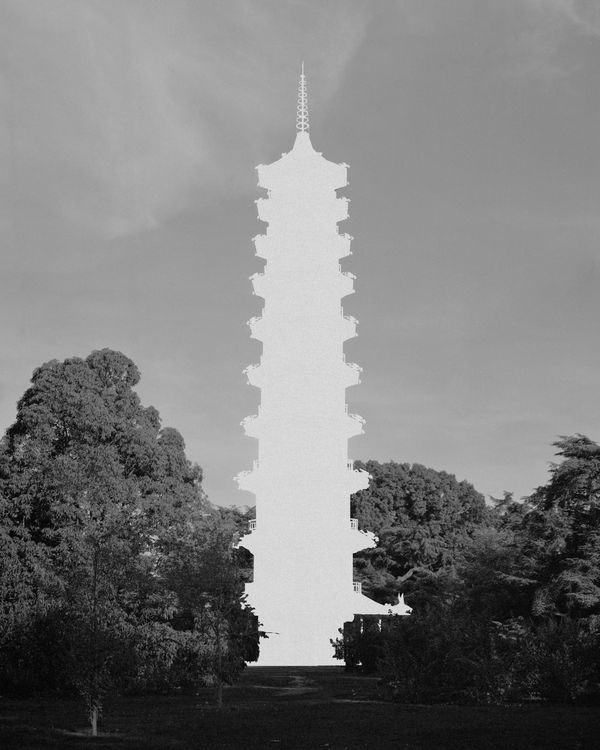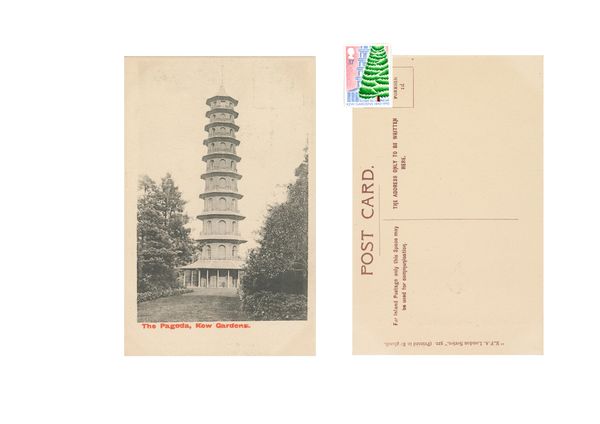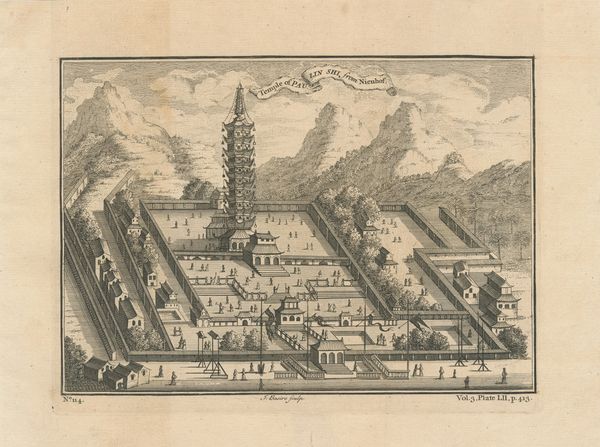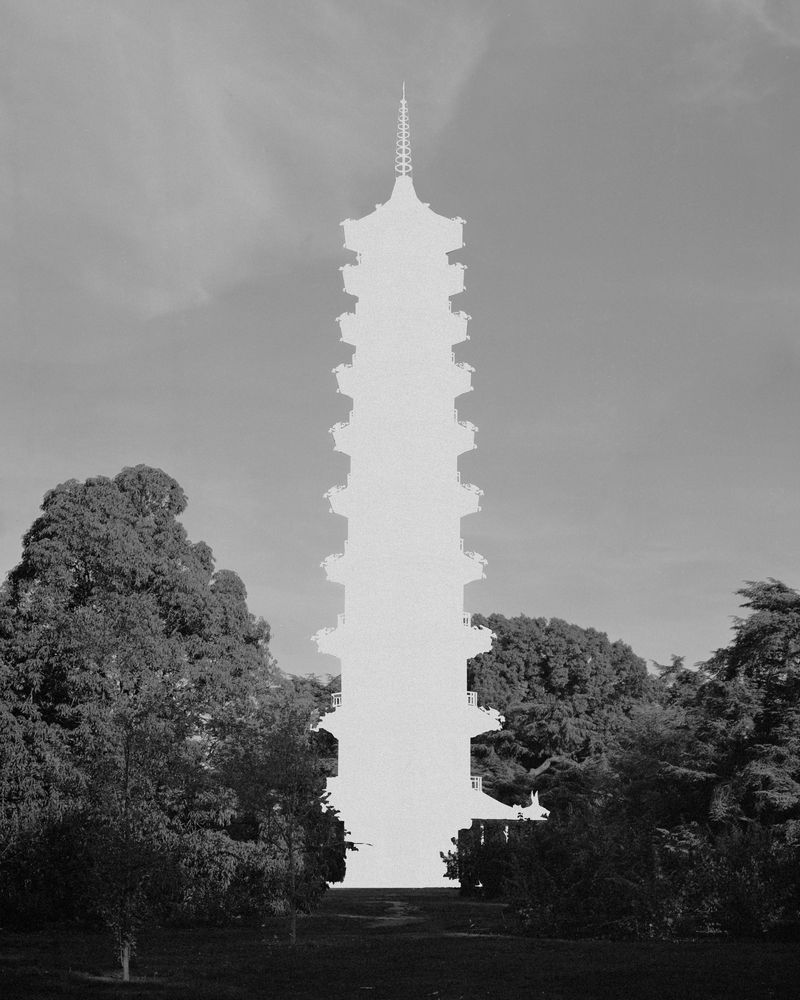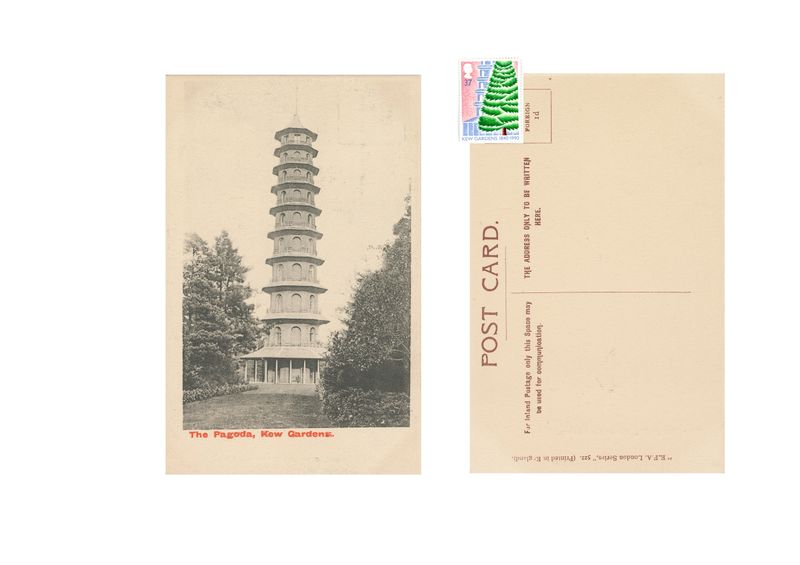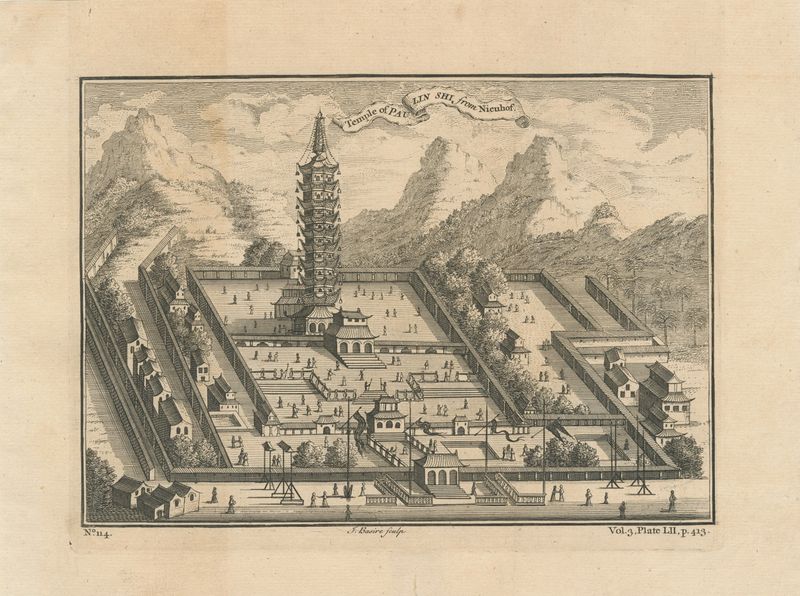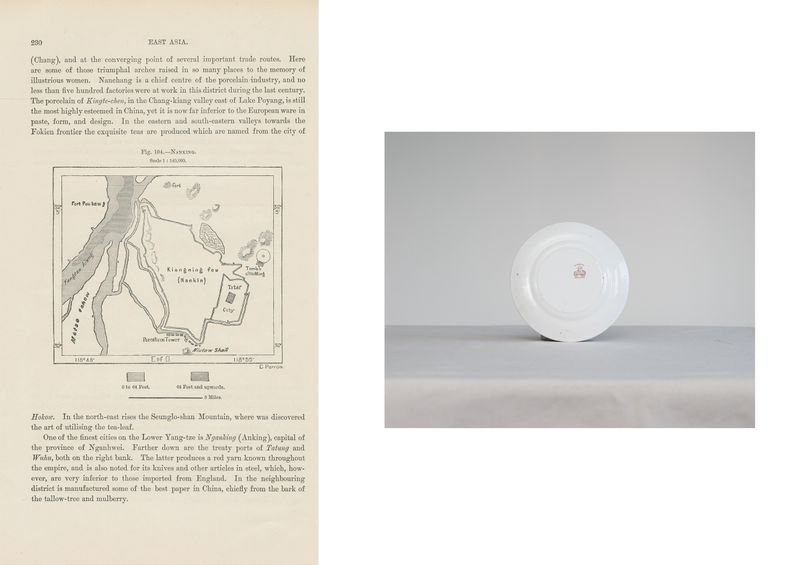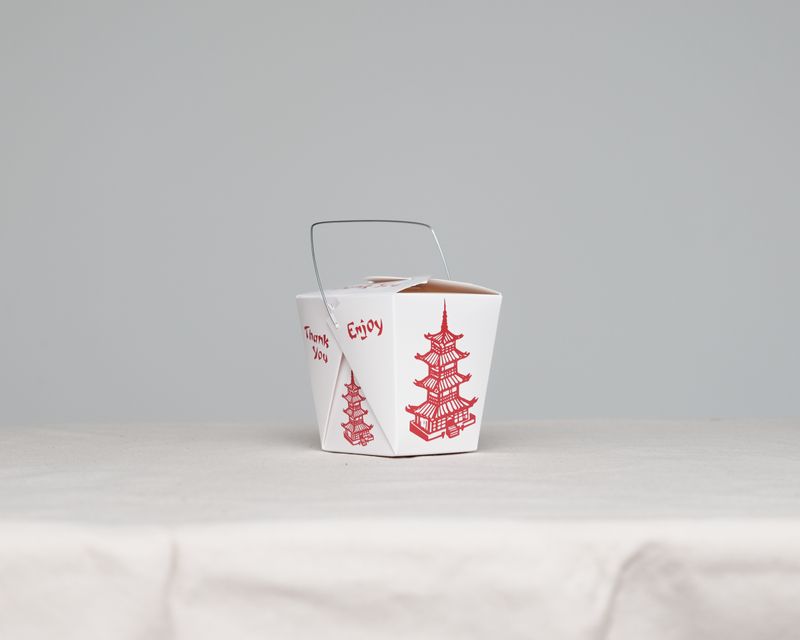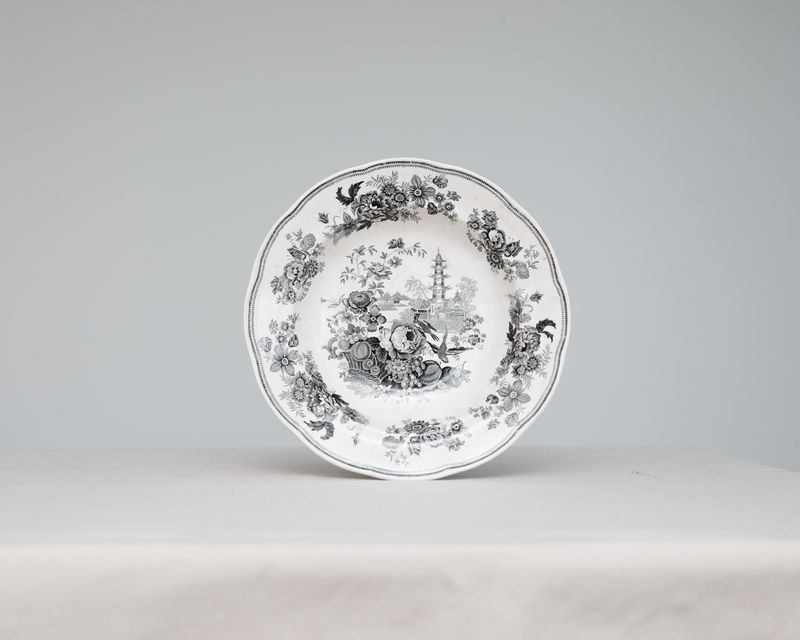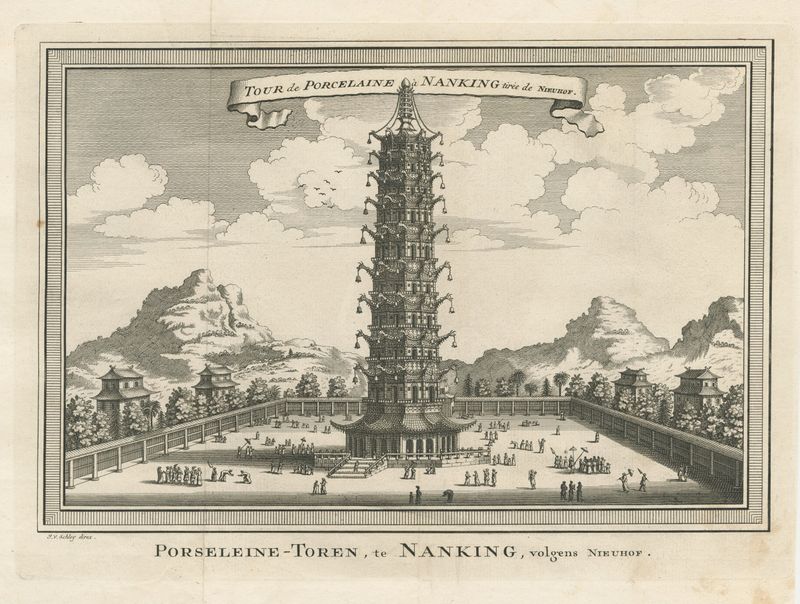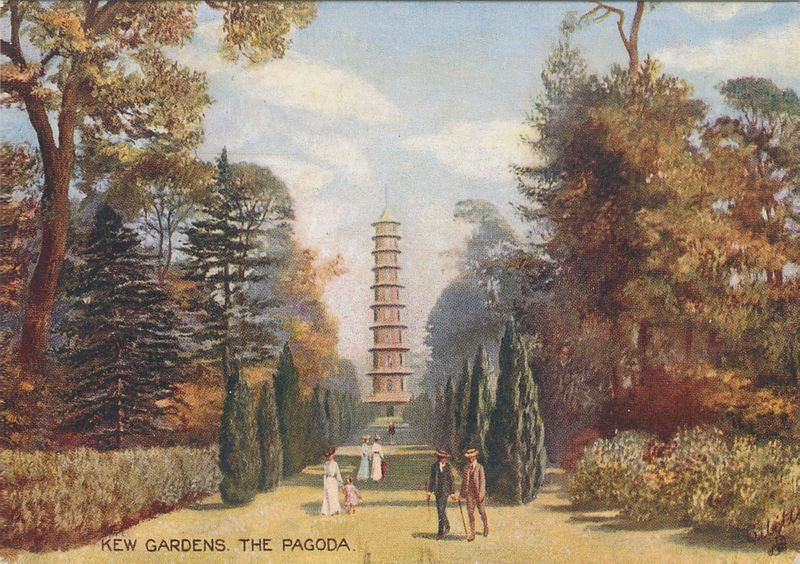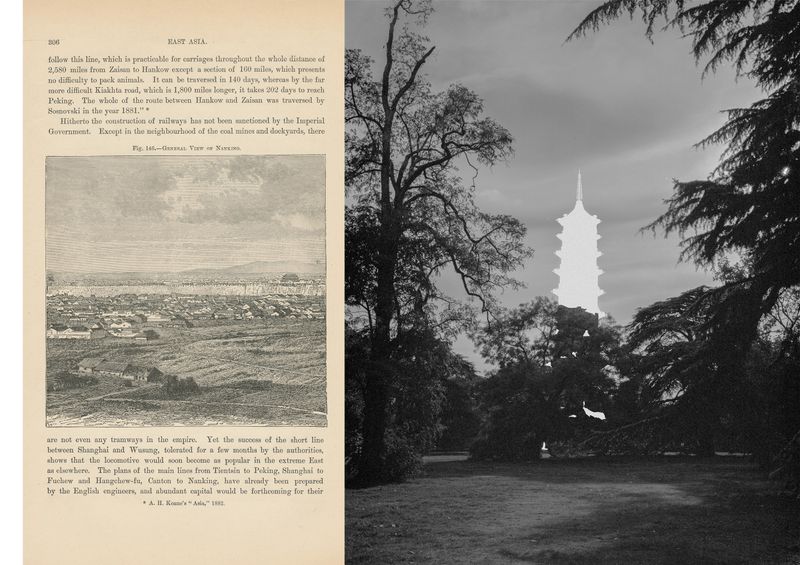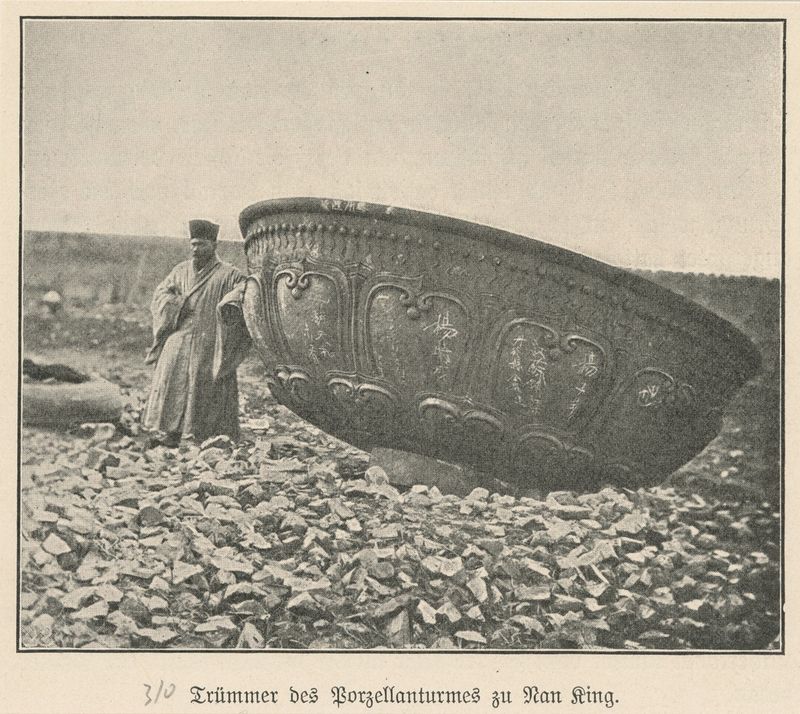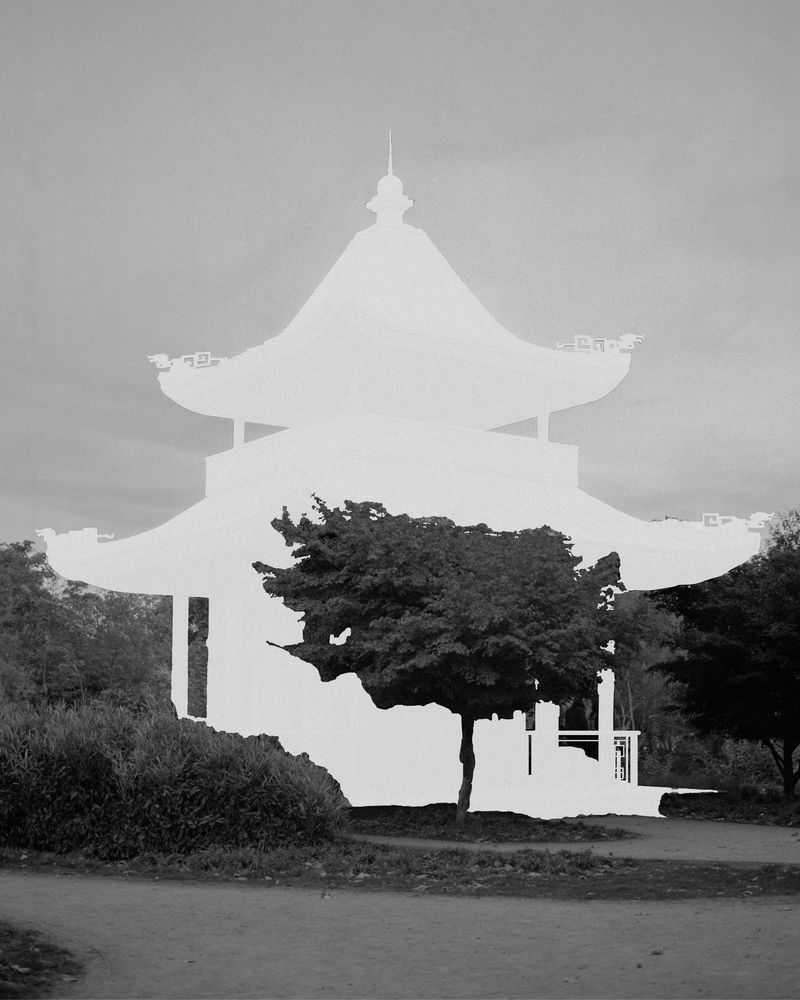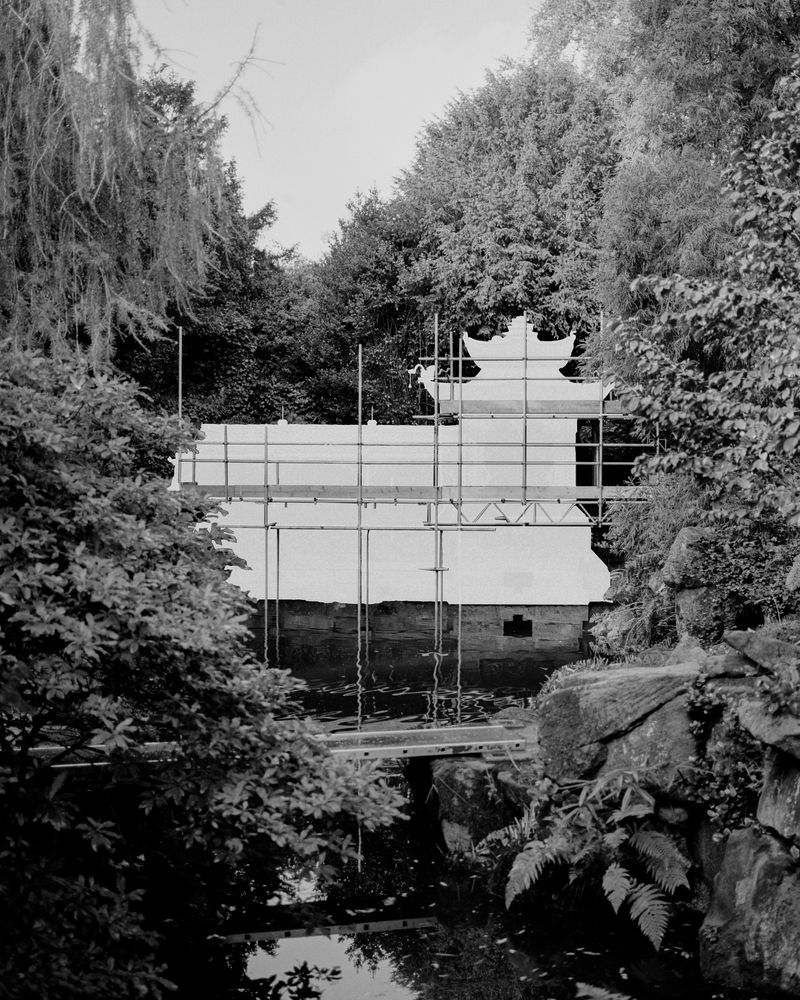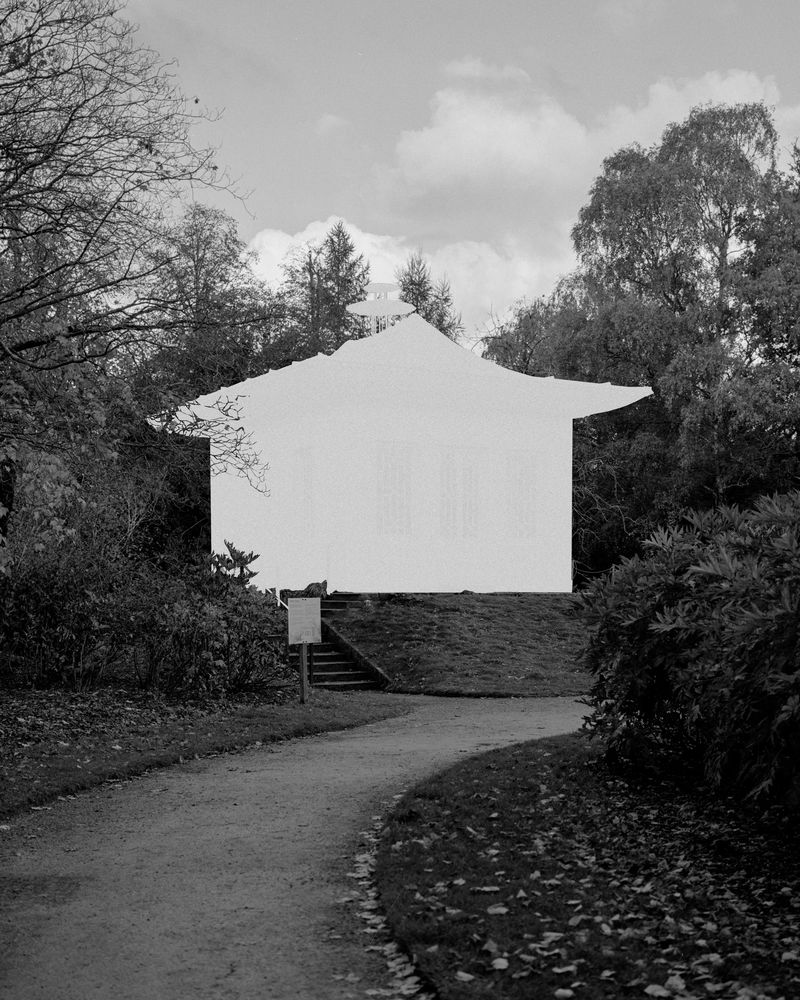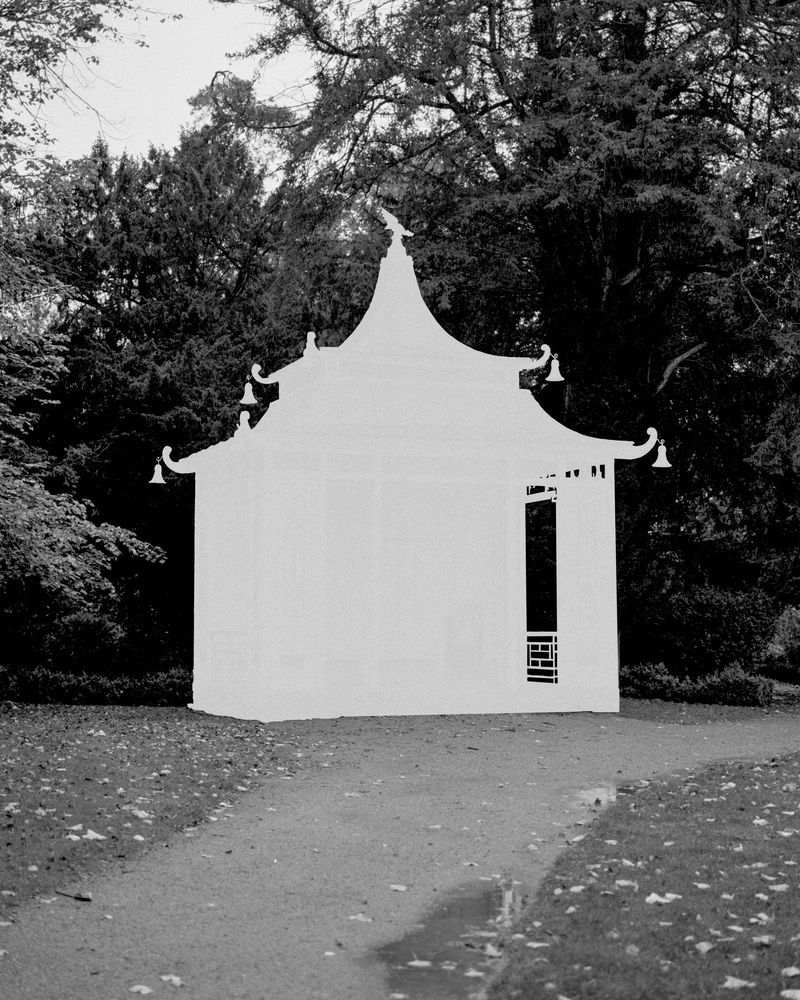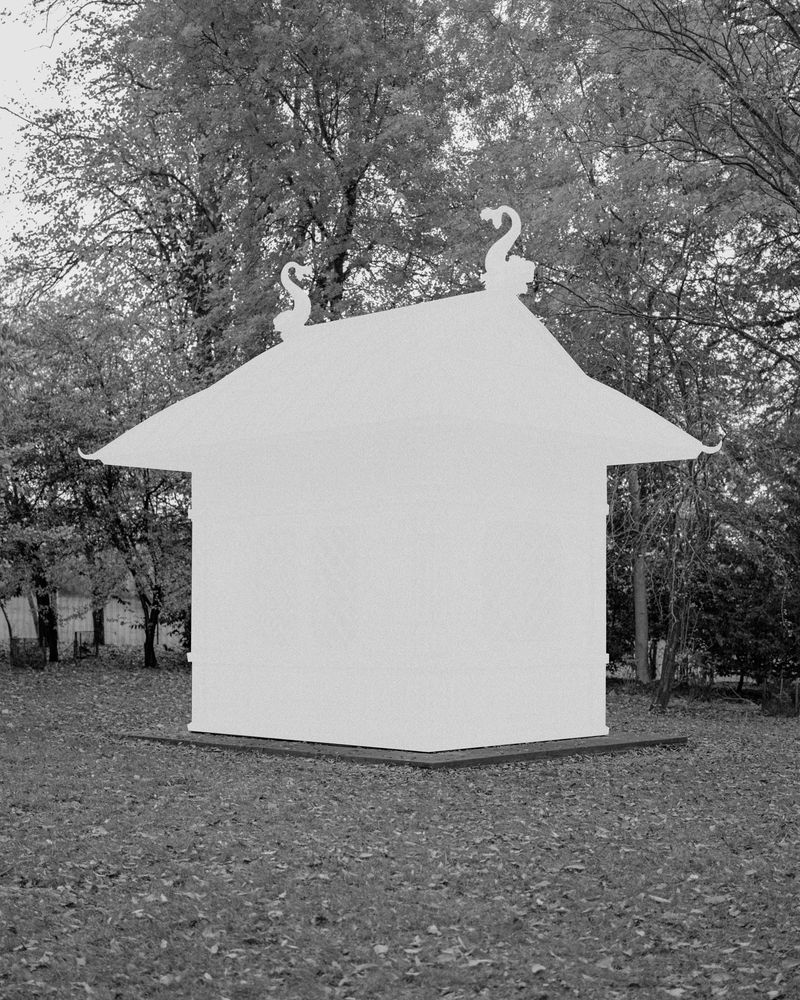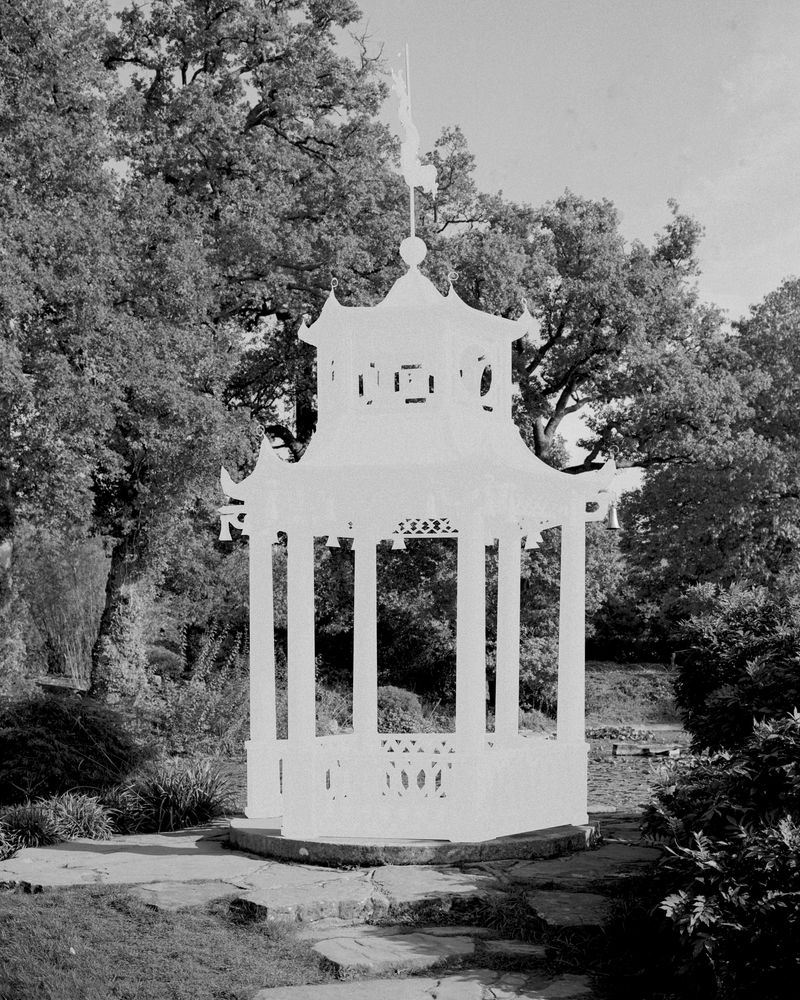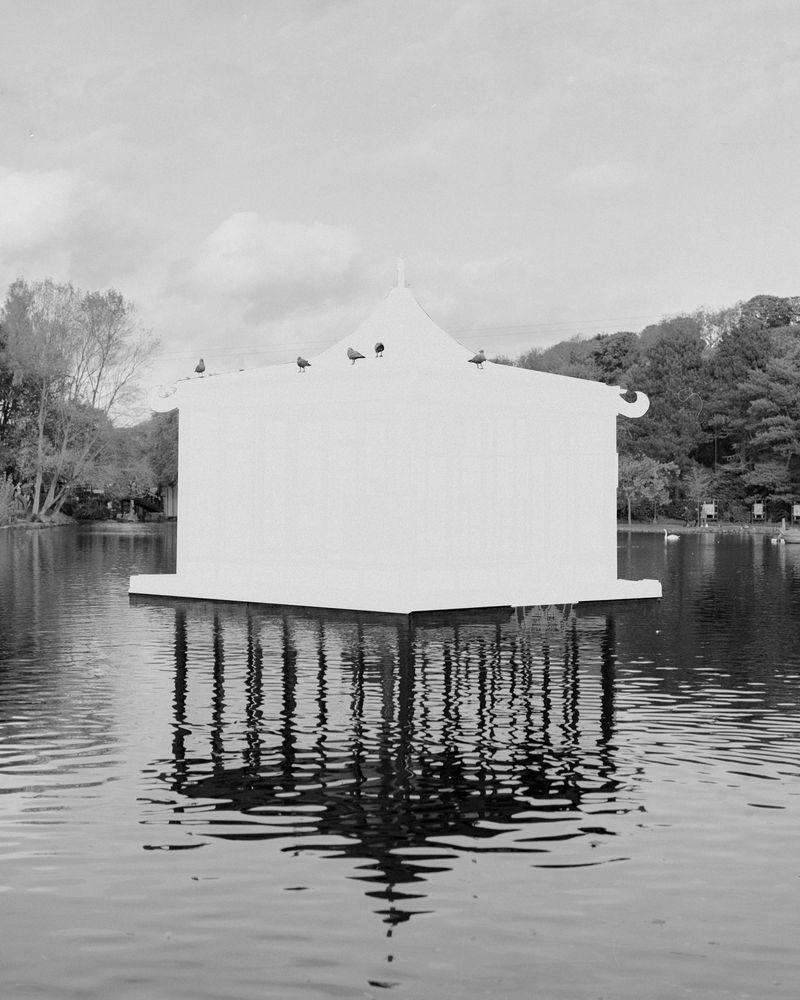The Oriental Scene
-
Dates2021 - Ongoing
-
Author
- Location City of London, United Kingdom
-
Recognition
"The Oriental Scene" investigates chinoiserie architecture in the UK in the context of de-colonialism. Primarily through a collection of historical archives of the Porcelain Tower of Nanjing, which includes objects, paintings and documents, the artist attempts to show the development of the pagoda's imagery over time in its different artistic and practical forms.
In the 17th and 18th centuries, while Europe was experiencing a wave of Chinoiserie, Sir William Chambers built a replica of the Porcelain Tower of Nanking at Kew Gardens in 1762, which was destroyed by the Taiping army in 1856. No photographs of the Porcelain Tower were left before photography was widely used. There are subtle differences in the depiction of the Porcelain Tower in the imagery preserved in the East and West, leading to misunderstandings; for example, the number of storeys of the Porcelain Tower in Nanking is shown in European prints and book illustrations in both nine- and ten-storey versions. However, according to Chinese Han Buddhist tradition, in most cases, the pagoda must have an odd number of storeys, and the Nanking Tower is nine. The fact that the pagoda at Kew Garden has ten storeys raises the suspicion that it has been misrepresented by the image. From the widely circulated oriental images of the Chinoiserie period to the pagoda scene at Kew Gardens, the Porcelain Tower became an iconic symbol of the early Western world's imagination of the East.
The Orient, metaphorically represented by the porcelain tower, is also concealed within a grander narrative; In this project, photography is used to render these images in a contemporary form by redacting the outline of the reimagining of the Oriental presence. Through the erasure of Orientalism, the artist hopes to put the work in a more neutral state - one of de-imagination and re-imagination. As the audience enters the visual narratives In the fictional exhibition, the audience becomes the subject of the imagination, part of participating in the authenticity and ambiguity of oriental symbols as they are transmitted and imagined. The architectural redaction intervenes in the debate on the ownership of the East under Orientalism, revealing the history of cultural colonisation behind the oriental scenes created by the West and the institutional problems of the museum.
The project is concerned with the examination of Orientalism and the writing of visual narratives. Rethinking how the pagoda has been used as a means to create images of the East and used by the West to portray cultural otherness. The Oriental Scene is constructed around juxtapositions and assemblages of historical and contemporary artworks and visual literature, pointing to a process of visual cultural transference regarding the Porcelain Tower.
